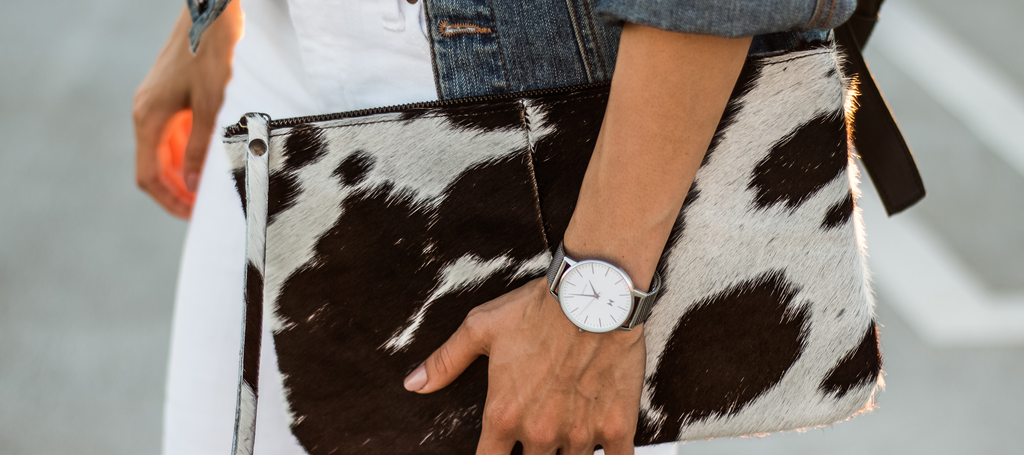The Purse: History, Origin & FAQs
Table of Contents

History and Origins
In American English, purse and handbag are synonyms whilst in Britain purse refers exclusively to a small pouch or wallet carried by women, however it is clear that both purse and handbag share the same origins. The leather bag is one of human beings’ oldest pieces of technology: an animal hide is pierced around its perimeter and a draw string is inserted to create a bag which can be closed. Ancient Egyptian hieroglyphs depict figures wearing bags from their belts and bags of all sizes were certainly in use even before this period.
A purse, in the British sense of the word, is primarily a bag for holding coins and therefore we can assume the use of purses coincides with the invention of coins in about the fifth or sixth century BCE. Early purses have of course long since decayed, although archaeologists did discover an ornamental leather purse in an Anglo-Saxon burial mound which contained forty gold coins.
The Romans had the word ‘bursa’ to describe a bag for carrying money and The Oxford English Dictionary identifies ‘purs’ as Old English in origin. Shakespeare uses the word in its modern sense in Othello when he writes the line ‘Put money in thy purse’.
Prior to the sixteenth century, clothing did not have pockets so both men and women kept their valuables in a small bag worn around the waist for maximum security.

The chatelaine, meaning literally ‘mistress of the chateau’ were ornamental hooks which women wore secured to their belt or girdle from which they carried a purse and keys. It is here that the purse first emerges as a fashion object, signifying power and status.
The Scottish sporran, which is still worn today, is a survival of this early form of purse, necessary because of the difficulty of incorporating pockets into a kilt. In the late Middle Ages purses were constructed using leather stretched over a triangular metal frame and with a metal clasp instead of a draw string, a design very similar to what we would recognise as a modern purse. In the Eighteenth Century, women’s dresses, influenced by classical models, became much lighter and the waistline moved up to below the breast and so slender purses with a wrist strap, known as reticules, came into fashion. With the rise of the middle class in the Nineteenth Century, more women had need for a purse; increasing leisure and travel opportunities meant that more women, not just the mistress of the house, needed to carry tickets, cards and coins.
In the late Nineteenth Century an enthusiasm for things Medieval, influenced by the Gothic revival in architecture and interior design, led to a fashion for the chatelaine purse. Another popular form of Victorian purse for both men and women, was the ‘miser’s purse’, so called because of the difficultly of getting any money out of it. This crocheted purse, about twelve inches in length, had metal rings which could be moved to secure coins at one end of the purse. The purse could then be carried in the hand or draped over a belt. As new technologies came along, so they were incorporated into the manufacture of purses, for example the development of a machine which could produce metal mesh led to a craze for mesh ‘finger purses’ just big enough to carry a mirror and calling cards. Later innovations such as zippers, plastics and Velcro would all be incorporated into an item which every Twentieth Century woman would come to regard as essential.
Features of a Purse
The purse continually evolves to meet the needs of contemporary usage. During the Twentieth Century the purse was used primarily for the carrying of coins, which in pre-decimal Britain were large and heavy, consequently purses were often simply a leather pouch closed by a clasp. Contemporary purses are now used primarily to carry cards and although they may contain a coin pouch they are largely given over to a sequence of slots in which cards can be organised. Security is an important feature of a purse and therefore there is often a double fastening mechanism, a popper or clasp and an internal zipper.
Giving a Purse as a Gift
When giving a purse as a gift, superstition dictates that you should always place a coin in it: this will bring the recipient good luck and ensure that their purse is never empty. Adding a personalized message to the interior or the owner’s initials to the exterior is a popular way to make the gift extra special.
What is a Vegan Leather Purse?
Many animal rights activists regard the leather industry as the inhumane exploitation of animals and wish to see a change in public attitudes and the increased use of faux or substitute leather. Vegan leathers are produced by a chemical process and often use polyurethane or polyvinyl chloride, this material is non-recyclable and does not biodegrade. There are vegan leather materials such as Vegetan being developed which are 70% biodegradable. Vegan leather purses are likely to be cheaper than their leather counter-parts, but they are not as durable.
How to Clean a Leather Purse
A weekly wipe with a damp cloth should be sufficient to keep your purse clean. Leather is a natural, organic material, it will darken over time and develop a rich patina. There are specialist creams and conditioners which will help you maintain the appearance of your purse, but leather is porous, so any coloured liquid stains need to be mopped up as quickly as possible.
Can a Leather Purse be Dry Cleaned?
Despite what your dry cleaner tells you, never have a leather purse dry cleaned. If you do it will never be the same again.
Can a Leather Purse Get Wet?
You should protect your leather purse by avoiding exposure to strong sunlight and immersion in water, however, if you do drop it in the pool, it’s not the end of your purse. First towel dry your purse and then stuff it with kitchen towel, replacing as necessary, and allow it to dry slowly. Do not use a hair dryer or sit it on a radiator. When the purse is dry use a leather conditioner to replace the lost oils and restore the purse’s suppleness.
Can You Waterproof a Leather Purse?
Part of the attraction of leather is that it is a porous, breathable material and therefore you don’t want to apply some kind of sealant which would render it impermeable to water. Application of a neutral polish should be sufficient to repel light moisture.
Will Water and Rain Stain My Leather Purse?
Only if you leave it untreated. A wipe with a damp cloth should remove any marks, you can then apply leather conditioner when the purse is dry.
How to Soften a Leather Purse
Lanolin, a waxy secretion from sheep, is traditionally used to soften leather and is a constituent of many leather conditioners such as saddle soap.












